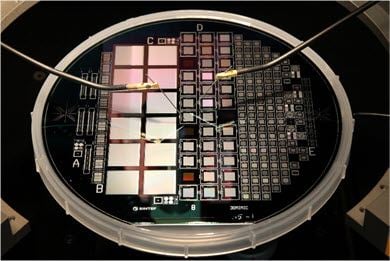Cosmic radiation is one of the main health hazards associated with space travel and exploration. Space weather is unpredictable and can produce harmful effects in both human and electronics. Space radiation is complex, consisting of mixed radiation fields of low and high energetic ions, electrons, gamma photons and neutrons, which makes radiation monitoring in space a huge challenge. Microdosimetry, unlike conventional dosimetry where only the absorbed dose is measured, provides unique information about the radiation effects in biological tissues upon radiation exposure on a cellular level.

As part of an international multi-disciplinary collaboration, SINTEF Minalab has been developing a unique silicon-based microdosimeter, originally for novel particle therapy in cancer treatment. For space radiation environment, the technology will better understand the radiobiological effects of space radiation and its effects on humans and electronics when compared to existing technology such as Tissue Equivalent Proportional Counters (TEPC), the current gold standard in microdosimetry. The technology is superior in terms of spatial resolution that is required for accurate radiation dose and radiobiological effect measurement for heavy ion radiation that have very narrow deposition range, usually on a micrometric scale. Furthermore, silicon-based sensor is extremely attractive. They are small and compact, with easy coupling to readout electronics where a reliable real-time on-line monitoring system can be manufactured. Furthermore, the operating power can be extremely low when using the unique 3D technology at Minalab. Low power operation is often a must for space mission where electrical power is limited.
In collaboration with ESA, SINTEF will design and develop a tissue equivalent sensor with high radiation tolerance capable of low power and real time measurement of mixed radiation field at cellular scale that mimic the interaction between radiation and human tissue. Our developed sensors from our latest R&D run were used to evaluate the biological effectiveness of carbon, nitrogen and oxygen ion beam for future heavy ion therapy. The evaluated results are the first of its kind. The published data won the Prestigious Farrington Daniels Award granted by the American Association for Physicists in Medicine for an outstanding paper on radiation therapy dosimetry, planning or delivery published in Medical Physics in 2018."

